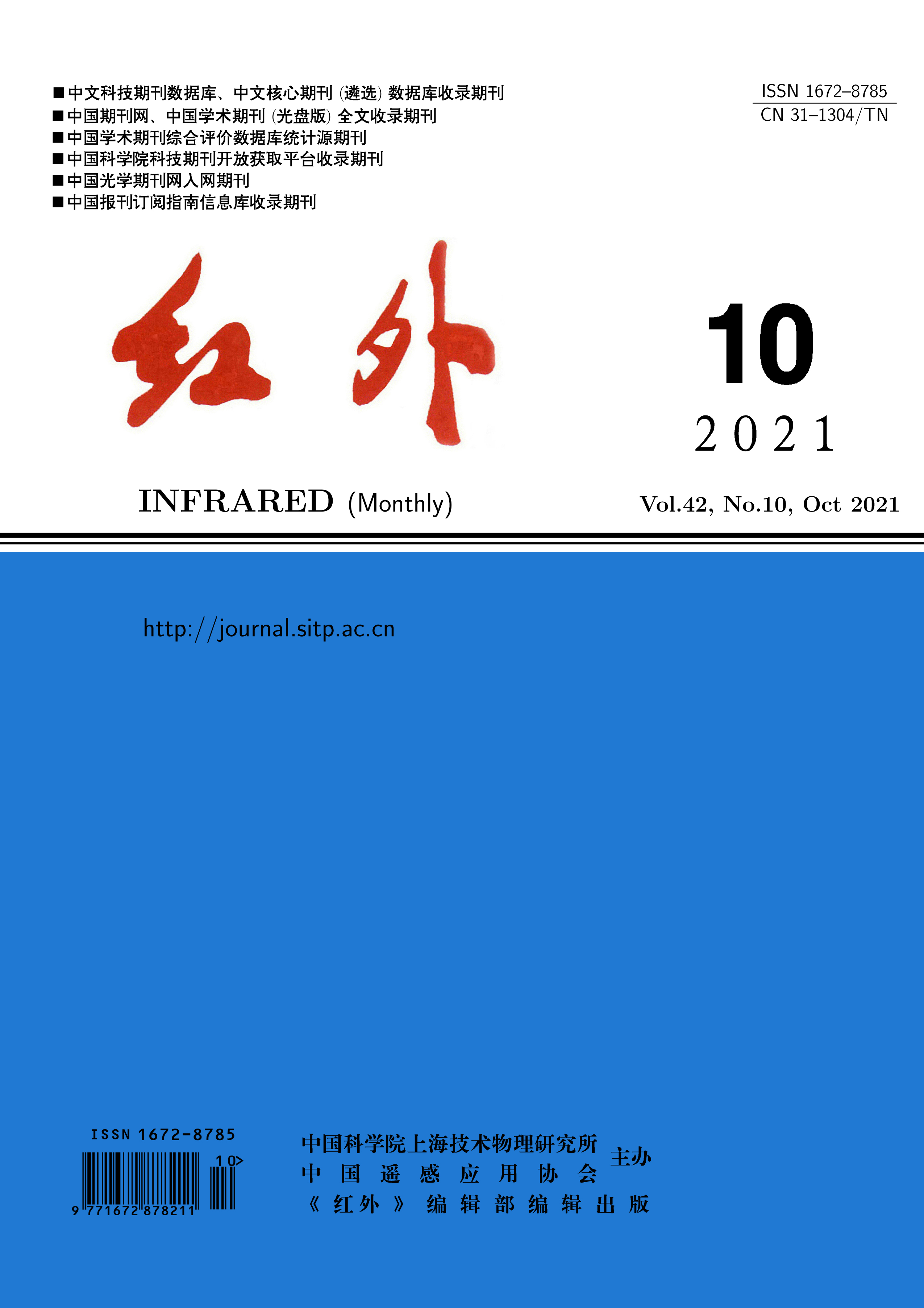
InAs/GaSb type-II superlattice long-wave/long-wave dual-color infrared focal plane devices with an array size of 320×256 and a pixel pitch of 30 m were prepared by dry/wet etching process, respectively. The mesa profile,contact hole profile,voltage-current characteristics,and mid-test performance after interconnecting the readout circuit and sealing dewar were compared. The characteristics of the fabrication of dual-color InAs/GaSb type-II superlattice focal plane devices by dry/wet etching process were summarized. This study has reference significance for the study of InAs/GaSb type-II superlattice focal plane devices.
A 10 m center-spacing infrared readout circuit with 2×2 pixel binning function is introduced. This circuit combines the characteristics of high resolution and high frame rate, and can meet the requirements of both long-distance search and short-distance tracking and recognition application modes. Before pixel binning, the array specification of the readout circuit is 1280×1024 with a pixel center-spacing of 10 m and high spatial resolution, suitable for short-distance tracking and recognition mode. In the pixel binning mode, the array specification changes to 640×512, pixel center-spacing changes to 20 m, and the sensitivity is high, which can be used in long-distance search mode. In addition, the proposed circuit adopts a serial input control method and has functions such as integrate then read (ITR)/integrate while read (IWR) working mode switching, 4/8 channels selectability, flipping and power consumption control. This circuit is designed with GF 018 m process. The simulation results show that the achieved maximum frame frequency by the readout circuit is doubled in the pixel binning mode.
The penetrating defects of HgCdTe by liquid phase epitaxy (LPE) can lead to the formation of multiple blind elements in subsequent device preparation. The depth of this type of defect was characterized using confocal microscopy, and the composition of the bottom of the defects was tested. The defects were dug up using a focused ion beam (FIB) and observed. For HgCdTe thin films on CdZnTe substrates with more penetrating defects, it was found that there is a certain correspondence between the penetrating defects on the surface of HgCdTe and the substrate defects. Therefore, it is speculated that the penetrating defects of HgCdTe by LPE originate from CdZnTe substrate defects.
Focusing is a key part of the launch focusing device in high-energy laser systems, and the focusing mechanism plays an important role in the targeting and striking accuracy of the system. In order to understand the research status and development trend of focusing mechanism, various types of foreign mature focusing mechanisms are introduced firstly. The principle of their focusing control and the solutions of various technical problems are analyzed. The domestic research situation focuses on four types of focusing mechanisms: cam, screw, worm gear and direct drive. For each form of focusing mechanism, the basic principle of controlling focusing is analyzed, and the design features of the focusing mechanism applied to different systems are introduced. By analyzing the design and control of each type of focusing mechanism, the advantages and disadvantages are summarized and compared, and the design ideas and research directions of the focusing mechanism for high-energy laser systems are proposed to lay the technical foundation for the research on focusing mechanism of high-energy laser systems.
At present, U-Net-based image deblurring algorithms have some problems, such as detail loss and poor image quality. Therefore, the U-Net structure is improved,and an image deblurring method based on multi-scale optimization and dynamic feature fusion is proposed in this paper. Firstly, according to detail loss, a simplified and effective MSRM is proposed to extract finer image features by increasing feature scale diversity. In addition, in order to transfer more favorable features to the decoding part, a dynamic feature fusion module is designed at the skip connection, which can selectively fuse different stages of encoding features by attention weighting. In this algorithm, multi-scale content loss and multi-scale high-frequency information loss are used for constraint training. Experimental results on GoPro and RealBlur data sets show that the proposed method can effectively improve image quality and restore more detailed information. Compared with the existing deblurring algorithms, the proposed algorithm has certain advantages in subjective vision and objective evaluation.
In order to develop all-optical flowrate measurement technology, a hot-wire flowmeter based on cobalt-doped high-attenuation fiber Bragg grating is proposed, and the flowrate measurement is achieved by demodulating the central wavelength of the fiber Bragg grating. The research process includes sensor fabrication, temperature sensing characteristics measurement and flowrate measurement experiments. The results show that the fiber Bragg grating has a temperature sensitivity of 103 pm/°C based on the fiber with an attenuation coefficient of 89 dB/cm (1480 nm), and the flowmeter can realize highly repeatable measurements in the range of 400~3700 L/h. The flowrate and the central wavelength of the fiber Bragg grating follow a specific nonlinear function. The average sensitivity of the flowmeter is about 015 pm/(L·h-1), and the sensitivity can be up to 1 pm/(L·h-1) at lower flow rates. The proposed flowmeter enriches the research of fiber Bragg grating for liquid flow measurement. In the design, cobalt-doped high attenuation fiber self-heating and single-end capillary packaging are used, which provides a new idea for the development of full optics, miniaturization and high sensitivity of flow sensor.








